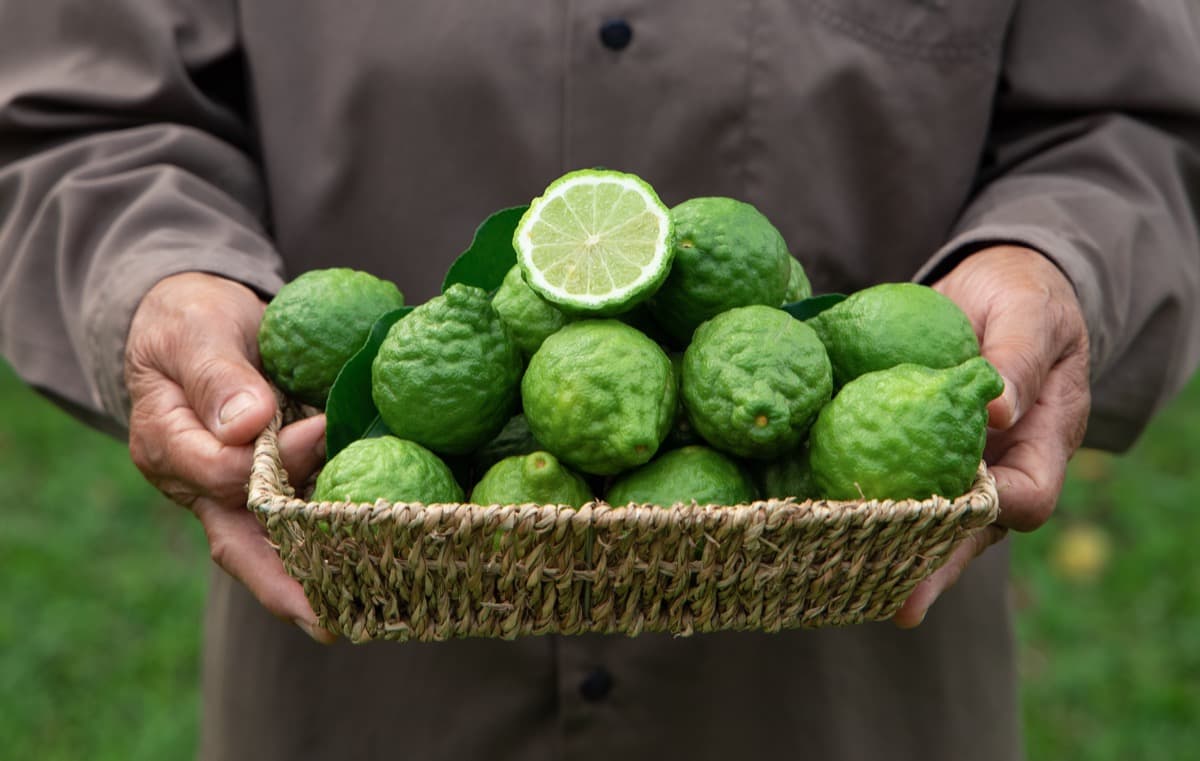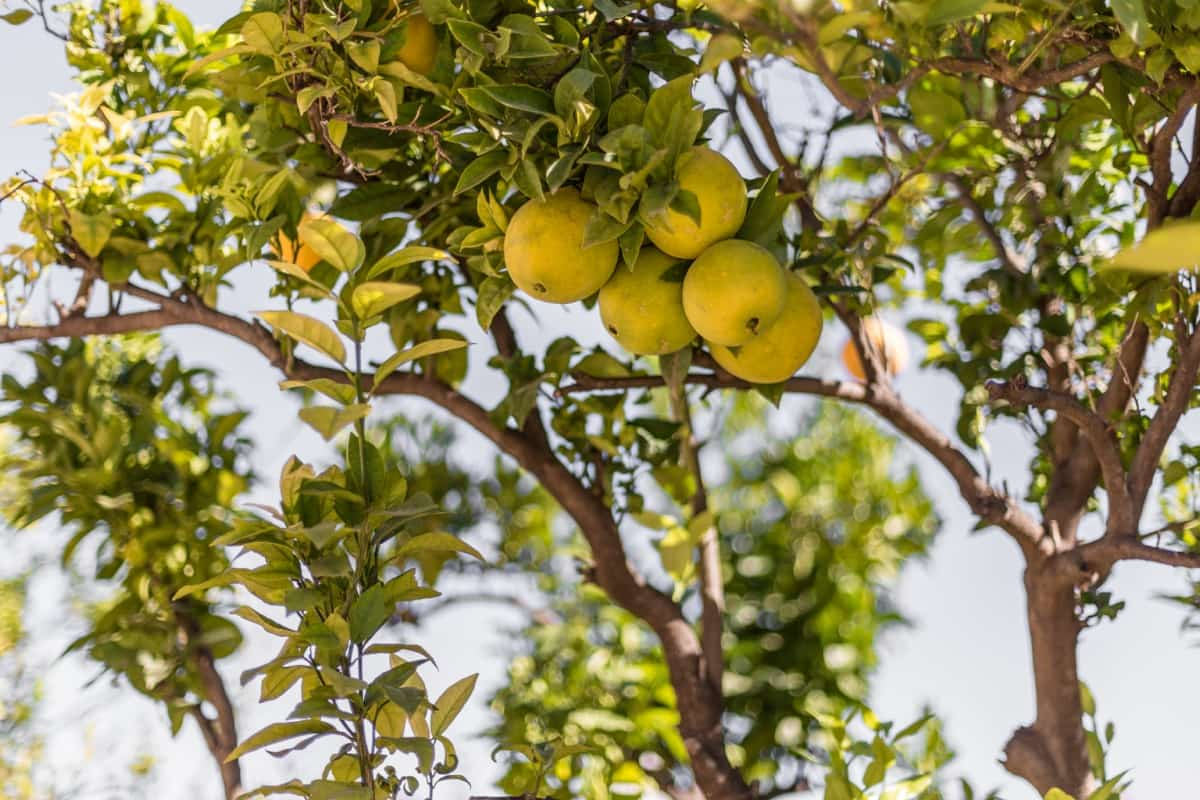The Bergamot Orange, a trendy citrus fruit, adds beauty to gardens and offers remarkable culinary value. This fruit is most known for its oil that flavors the famous Earl Grey tea and is also used in numerous perfume and cologne fragrances. This comprehensive guide will provide a step-by-step guide for planting a Bergamot Orange tree, along with detailed information on everything from the initial planting phase to harvest.

How to Grow and Care for Bergamot Orange Tree
Best Soil and Fertilizer for Growing Bergamot Oranges
The first step in growing any plant is to ensure the soil is well-prepared. Bergamot Orange trees prefer well-draining soil with a slightly acidic pH between 6.0 and 7.5. – Acidic conditions help roots absorb vital nutrients for robust and healthy growth. Prior to planting, enhance the soil with organic substances like compost or aged manure. This not only improves soil structure but also adds essential nutrients.
When it comes to fertilizer, Bergamot trees appreciate a balanced citrus fertilizer. A nitrogen, potassium, and phosphorus fertilizer will support overall tree health, promoting leafy growth and fruit production. The fertilizer should also contain trace amounts of micronutrients like iron, zinc, and manganese, which are crucial for the overall well-being of the plant. Feeding your Bergamot trees in early spring and again in early summer is best to support their vigorous growth.
Pruning Techniques to Promote Growth in Bergamot Orange Trees
Pruning is vital to Bergamot Orange tree care, encouraging healthy growth and improving fruit yield. Ideally, pruning should be done in early spring before the new growth starts but after the risk of frost has passed. Remove any dead or diseased branches first. Then, thin out the tree’s center to allow light and air circulation. This prevents fungal diseases and encourages healthy growth.
Removing any suckers growing at the tree’s base is also beneficial, as these can drain energy from the main tree. For dwarf Bergamot trees, the pruning process is the same but on a smaller scale. Because of their size, they are great candidates for growing Bergamot in containers, which can be placed outdoors during warm weather and brought inside during colder months. This versatility makes them excellent choices for Bergamot tree indoor cultivation.
Watering Schedule and Proper Irrigation for Bergamot Orange Trees
Bergamot Orange trees need regular watering to thrive. The goal is to keep the soil moist but not waterlogged, which can lead to root rot. During the growing season, water the tree deeply once or twice a week, allowing the water to penetrate deep into the soil. In periods of drought, additional watering may be needed.
On the other hand, when growing the Bergamot Orange tree in containers, the watering frequency may increase due to the pot’s limited size, especially during hot weather. Monitor the top 2-3 inches of the soil. When it feels dry to the touch, it’s time to water again.
Protecting Bergamot Orange Trees From Pests and Diseases
Common pests include aphids, citrus leafminers, scale insects, and spider mites. Regularly inspect the tree for signs of these pests. On the disease front, Bergamot trees can be susceptible to citrus canker, citrus greening, and root rot. Regularly checking leaves, stems, and fruit can help identify problems early on.
It is best to consult with a local nursery or extension service for any noticeable issues for appropriate treatment measures. While preventative measures are always the best defense, ensuring the tree is healthy with proper watering, feeding, and pruning will make it less susceptible to pests and diseases.
Tips for Growing Bergamot Orange Trees in Your Garden
First, choose a suitable location in your garden. Bergamot trees need full sun and protection from strong winds. Moreover, consider the Bergamot tree zone. These trees are typically hardy in USDA hardiness zones 9 through 11. However, in cooler climates, a dwarf Bergamot tree or growing Bergamot in containers can be a viable alternative as the tree can be moved indoors during colder months.
In case you missed it: 9 Causes of Dying Orange Tree and How to Fix It?

Next, dig a hole with double the width and equal depth of the root ball of your Bergamot Orange tree. Place the tree in the hole, ensuring that the top of the root ball is level with the soil surface. Backfill the hole with the excavated soil, firming it gently around the roots. Another option for starting your Bergamot tree journey is through Bergamot orange tree seeds. However, growing citrus trees from seeds can be long and challenging, often requiring a few years before fruit production.
Essential Care Instructions for a Healthy Bergamot Orange Tree
Like any other citrus trees, Bergamot Orange trees require specific care to thrive. In addition to regular watering and feeding, protecting them from cold temperatures is crucial. Consider covering the tree with a frost cloth or moving container-grown trees indoors if a frost is expected. Moreover, monitor your tree for any signs of stress or disease. Yellowing leaves, drooping branches, or a lack of fruit may signal a problem that needs to be addressed.
Harvesting and Storing Bergamot Oranges at the Right Time
Bergamot Oranges are typically ready to harvest in late fall or early winter. The fruit should be fully colored – a sign that it’s ripe and ready to pick. Gently twist the fruit from the tree to avoid damaging the branches. Once harvested, Bergamot Oranges can be stored in a cool, dark place for several weeks. For longer storage, the fruit can be refrigerated. However, the real beauty of Bergamot lies in its fragrant zest and juice, which can be used fresh to flavor teas, cocktails, or culinary dishes.
Winter Care and Frost Protection for Bergamot Orange Trees
While Bergamot Orange trees can handle cooler temperatures, they are not frost-tolerant. If a frost or freeze is expected, steps must be taken to protect the tree. This is particularly important for young trees that are not as hardy as established ones. Consider using a frost cloth or blanket to cover the tree for in-ground trees. Bring container-grown trees indoors until the threat of frost has passed. In colder climates, having a Bergamot tree indoors during winter can protect the tree and provide a lovely, fragrant addition to the home.
Troubleshooting Common Issues When Growing Bergamot Orange Trees
Despite our best efforts, problems can arise when growing Bergamot Orange trees. Yellow leaves can signal overwatering, nutrient deficiencies, or disease. A lack of fruit can be due to a lack of pollination or improper care, such as irregular watering or feeding. Bergamot trees also need a certain amount of chill hours – hours of temperatures below 45 degrees F but above 32 degrees F – to produce fruit.
In case you missed it: Top 10 Dwarf Fruit Trees to Grow in Pots

This can be an issue in warmer climates or when growing a Bergamot tree indoors. To troubleshoot these issues, start by reviewing the tree’s care. Ensure it is being watered and fed properly, that it’s in a location with full sun, and that it’s protected from pests and diseases. If the problem persists, consider contacting a local extension service for advice.
- Feed Your Flock for Less: Top 10 Tips to Save on Chicken Feed
- Ultimate Guide to Ossabaw Island Hog: Breeding, Raising, Diet, and Care
- Hatching Answers: The Top 10 Reasons Your Chickens Aren’t Laying Eggs
- Eggs and Economics: Breaking Down the Cost of Raising Backyard Chickens
- Defend Your Greens: Proven Methods to Keep Iguanas Out of Your Garden
- Ultimate Guide to Cinnamon Queen Chicken: A Comprehensive Guide for Beginners
- Ultimate Guide to California Tan Chicken: Breeding, Raising, Diet, Egg-Production and Care
- Ultimate Guide to Marsh Daisy Chicken: Breeding, Raising, Diet, and Care
- 10 Types of Chicken Farming Businesses You Can Start for Profits